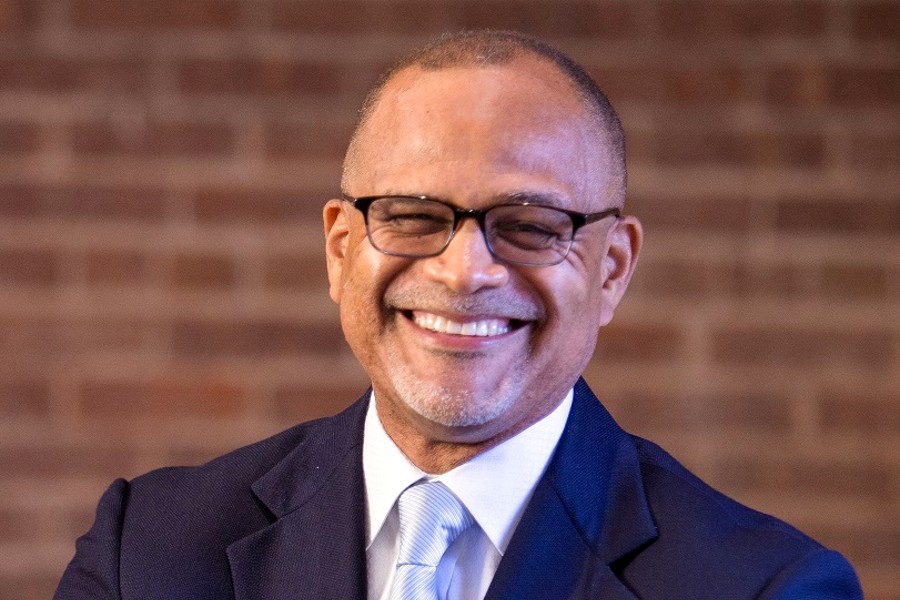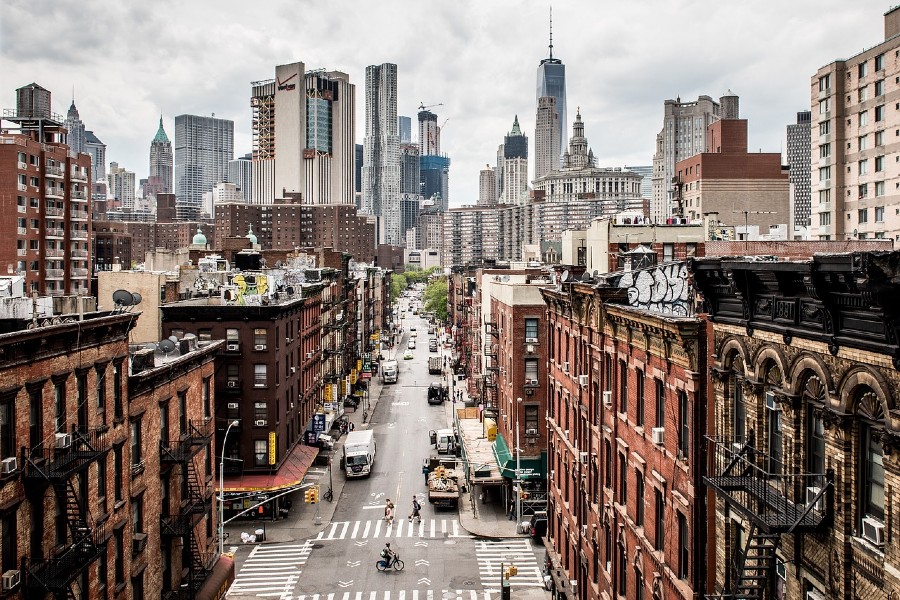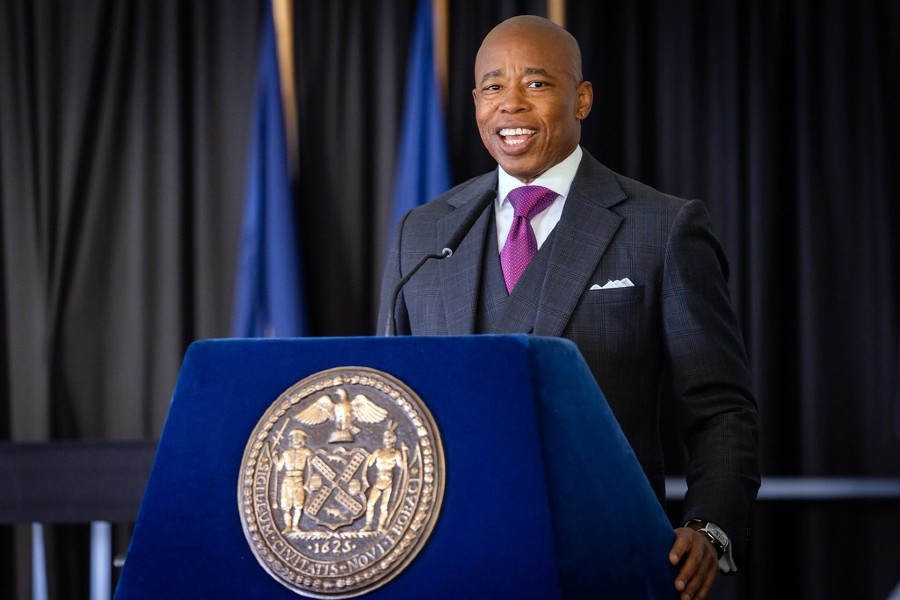
The New York City Mayor’s Office of Climate & Environmental Justice (MOCEJ) today released the Environmental Justice NYC (EJNYC) Report.
The city’s first comprehensive study on systemic environmental inequity across all five boroughs, and the EJNYC Mapping Tool, the city’s first-ever interactive online resource that provides policymakers, community leaders, and everyday New Yorkers with detailed analysis of the environmental hazards in their own neighborhoods. The new report and mapping tool are another significant step in the Adams administration’s efforts to embed environmental justice into the city’s climate work. They both utilize the first-ever Flood Vulnerability Index (FVI) for New York City, which was developed by a team of researchers for MOCEJ, to aid in the office’s ongoing efforts to identify communities most vulnerable to coastal flooding.
“Our new environmental justice report and mapping tool are a major step toward dismantling decades of environmental racism that have threatened the health and quality of life of our most vulnerable community members, and this innovative approach will highlight the communities that have been most impacted by environmental inequities,” said New York City Mayor Eric Adams. “As we think about ways to achieve environmental justice, these tools will refine our policies around air and water quality, climate infrastructure, and more, and they will serve as a model for how the rest of the nation should tackle this critical issue.”
The EJNYC Report studies flood and heat vulnerability, exposure to air and hazardous materials pollution, transit access, availability of safe and healthy housing, and more, and concludes that low-income communities and communities of color in New York City are the most vulnerable to environmental inequities. The EJNYC Mapping Tool is an effort to democratize data by giving people an opportunity to see the environmental inequities in their neighborhoods, such as proximity to parks and “peaker” power plants, the quality of the harbor water, and the level of access to air conditioning. This tool can inform city decision-making and support ongoing grassroots environmental justice work.
“The facts are clear: New Yorkers still face far too great a variance of environmental hazards they’re exposed to based on the neighborhoods where they live, work, and learn. Education is a crucial tool as we work to close the gap, with better cleaner air and water from Bay Ridge to the Bronx,” said Deputy Mayor for Operations Meera Joshi. “Empowered with this interactive mapping tool, New Yorkers will not only be able to inform their choices, but advocate more effectively for what their communities deserve.”
“The EJNYC Report and Mapping Tool are a call to action to address the issues that impact our environmental justice communities the most, including extreme heat, air quality and flood risk,” said Mayor’s Office of Climate & Environmental Justice Executive Director Elijah Hutchinson. “With this information in hand, New Yorkers can now advance better policy and work together to achieve better health outcomes, reimagine polluting infrastructure, and increase tree canopy for all.”
“Used together, the report and mapping tool allow us to see the ways population characteristics and health vulnerabilities can contribute to more severe adverse effects of climate change – including stormwater flooding,” said New York City Chief Climate Officer and Department of Environmental Protection Commissioner Rohit T. Aggarwala. “With these tools and the coming EJNYC Plan, the Adams administration is incorporating equity measures into planning, increasing data transparency, and embedding environmental justice considerations into how we site infrastructure.”
The environmental justice (EJ) areas studied in the report are drawn from New York State’s Disadvantaged Communities (DAC) criteria, created from 45 indicators that represent the environmental burdens or climate change risks within a community, or population characteristics and health vulnerabilities that can contribute to more severe adverse effects of climate change. Connecting historical housing discrimination with present-day environmental inequities, the report finds 67 percent of the total New York City population of historically redlined areas live in EJ areas today.
The EJNYC Report also shows EJ areas have:
- More stationary sources of pollution, including “peaker” power plants, waste processing facilities, and hazardous waste generators;
- More observed health disparities, such as more pollution-attributable emergency department visits;
- Greater exposure to emissions from heavy-duty diesel vehicles due to the location of arterial highways, commercial waste routes, delivery routes, and parking facilities for medium and heavy-duty fleets;
- Greater exposure to flooding due to coastal storm surge, chronic tidal flooding, and extreme rainfall in the current decade.
New York State’s Climate Leadership and Community Protection Act requires the identification and consideration of DACs in implementing the act and other state-led actions. DACs, or EJ areas, comprise 44 percent of all New York City census tracts and 49 percent of its population. Residents of New York City’s DACs are predominantly Hispanic or Latino (43 percent, compared to 29 percent citywide) and Black (27 percent, compared to 21 percent citywide).
The EJNYC Report was informed by thousands of comments from New Yorkers as well as the input of an EJ Advisory Board (EJAB) and EJ Interagency Working Group. Established in 2017, the EJAB is composed of external environmental justice leaders—advocates, academics, and public health experts.
The EJNYC Report outlines five main policy opportunity areas to build on:
- Invest in EJ communities;
- Integrate environmental justice in agency decisions through climate budgeting;
- Improve accountability through increased data transparency and communication;
- Coordinate with permitting authorities to embed equity and environmental justice considerations in the siting and permitting of infrastructure; and
- Explore and develop new ways to collaborate with EJ communities.
The EJNYC Report and EJNYC Mapping Tool are the first steps in a multi-phased environmental justice planning process, to be followed by developing a multi-agency citywide plan on environmental justice.
“As chair of New York City’s Environmental Justice Advisory Board, which provided guidance on the development of this report, I am pleased that it has finally been completed,” said Peggy Shepard, co-founder & executive director, WE ACT for Environmental Justice. “The next phase, as mandated by law, is to develop a comprehensive, citywide plan to address the environmental justice issues identified in the report. This is what I and many of my colleagues are really looking forward to, engaging the city’s environmental justice communities to find equitable solutions for these issues and then making sure they are effectively implemented by the city.”
“For the past four years, we have asked New Yorkers from across the city to share their environmental frustrations, their environmental anger, and their environmental hopes for New York,” said Rebecca Bratspies, professor, CUNY School of Law and Center for Urban Environmental Reform. “As a member of the Environmental Justice Advisory Board, it was my privilege and honor to help facilitate some of those conversations. Sometimes the stories were hard to hear. But the city listened, and this report reflects the challenges we heard and highlights the opportunities for change. This Environmental Justice Report is just the first step. Now comes the real work of using it to build a more equitable, greener city.”
“As the former chair of the New York City Council’s Committee on Environmental Protection, to my time as a member of the EJAB, I have been grateful to work with a great team at MOCEJ that has prioritized community involvement and working with advocates on the ground to identify environmental justice issues throughout the city,” said Costa Constantinides, CEO, Variety Boys and Girls Club of Queens. “Our Queens community is on the frontline of these injustices and the stationery pollution from ‘peaker’ power plants has come at a steep cost to our families, producing higher rates of asthma than the borough’s average. As we look to transform our community from ‘Asthma Alley’ to ‘Renewable Row,’ we will need tools like the ones unveiled today.”
“Embedding environmental justice into the city’s climate work is an essential step towards helping our city and all of our residents thrive,” said Morgan Monaco, president, Prospect Park Alliance. “Making tangible, environmental justice data accessible to all is essential in shaping policies that address inequities that disproportionately impact low-income communities and communities of color in New York City. The data from EJNYC Report and Mapping Tool are vital launching points to begin to address disparate health outcomes, exposure to emissions, flooding vulnerability and more in our city.”
“Our best defense against the effects of climate change is making smart, strategic investments that protect our city’s greenspaces and make our ecosystems more resilient. In FY23, our tree planting program, which strategically targets heat vulnerable neighborhoods, reached its highest tree planting total in six fiscal years,” said New York City Department of Parks and Recreation Commissioner Sue Donoghue. “By mapping out neighborhoods’ proximity to parks and water quality levels, this EJNYC report and mapping tool sheds light on inequities and increases transparency. We commend MOCEJ for unveiling these essential resources that will promote environmental justice and ensure we are a greener, more resilient, and more equitable city for all New Yorkers.”
“This report and mapping tool represents a major step forward for environmental justice in New York City,” said Department of City Planning Director Dan Garodnick. “Through our ongoing collaboration across city government, City of Yes initiatives, and critical resilience and sustainability efforts, we’re proud to help chart a path forward to a more environmentally-friendly city that works for everyone and leaves no neighborhood behind.”
“As we prepare our young people to lead our city, it is crucial to study, document, and understand the systemic environmental inequities that continue to impact our Black and Brown communities,” said Schools Chancellor David C. Banks. “We are working to shape a greener city for our students to inherit, and I’m grateful to our agency partners for creating a valuable resource for today’s policymakers and a guiding tool for tomorrow’s.”
“State of the art technology like the EJNYC Mapping Tool and EJNYC Report will provide New Yorkers with an understanding of the environmental risks that they are facing and give government a deeper understanding of how to address those risks,” said NYCEDC President & CEO Andrew Kimball. “NYCEDC applauds the Mayor’s Office of Climate and Environmental Justice, and we look forward to this tool and report helping the city to invest equitably around the five boroughs.”
“ANHD commends MOCEJ on this important milestone in advancing environmental justice and a more equitable approach to planning for NYC,” said Chris Walters, senior land use policy associate, Association for Neighborhood and Housing Development. “The EJNYC Report and Mapping Tool are vital resources in transparently identifying environmental inequities in our city, better-empowering communities and elected officials to address these systemic issues head on. ANHD looks forward to building on this work as a key pillar of a more comprehensive and equity-focused approach to planning for our city’s future.”
“Listening to the voices of those most affected by environmental issues is crucial to achieving environmental equity,” said Paris Perez, member, RiseBoro Community Advisory Committee. “It is not enough to focus solely on the privileged; we must ensure that everyone has a voice and is heard. By doing so, we can create a more just and sustainable society for all.”
Photo credit: NYC.gov.
Become a Harlem Insider!
By submitting this form, you are consenting to receive marketing emails from: Harlem World Magazine, 2521 1/2 west 42nd street, Los Angeles, CA, 90008, https://www.harlemworldmagazine.com. You can revoke your consent to receive emails at any time by using the SafeUnsubscribe® link, found at the bottom of every email. Emails are serviced by Constant Contact








